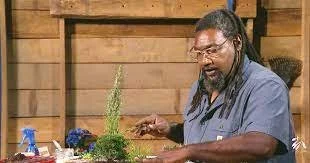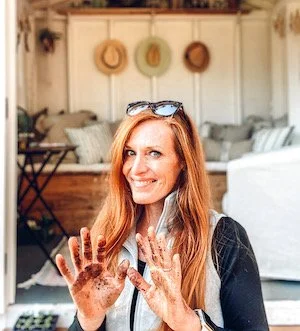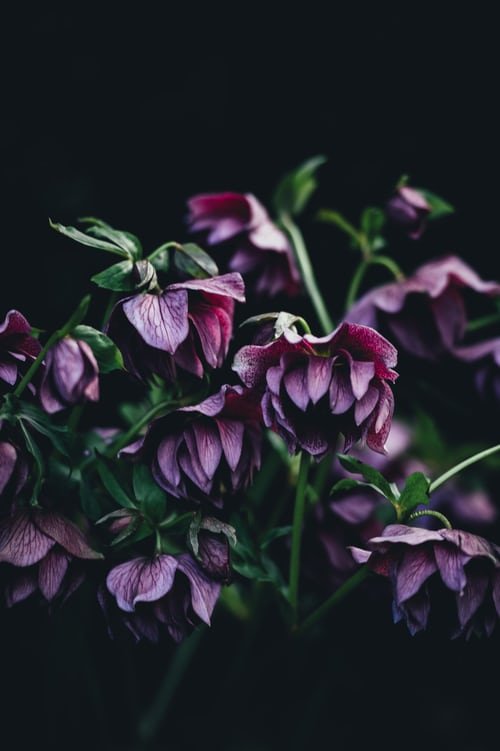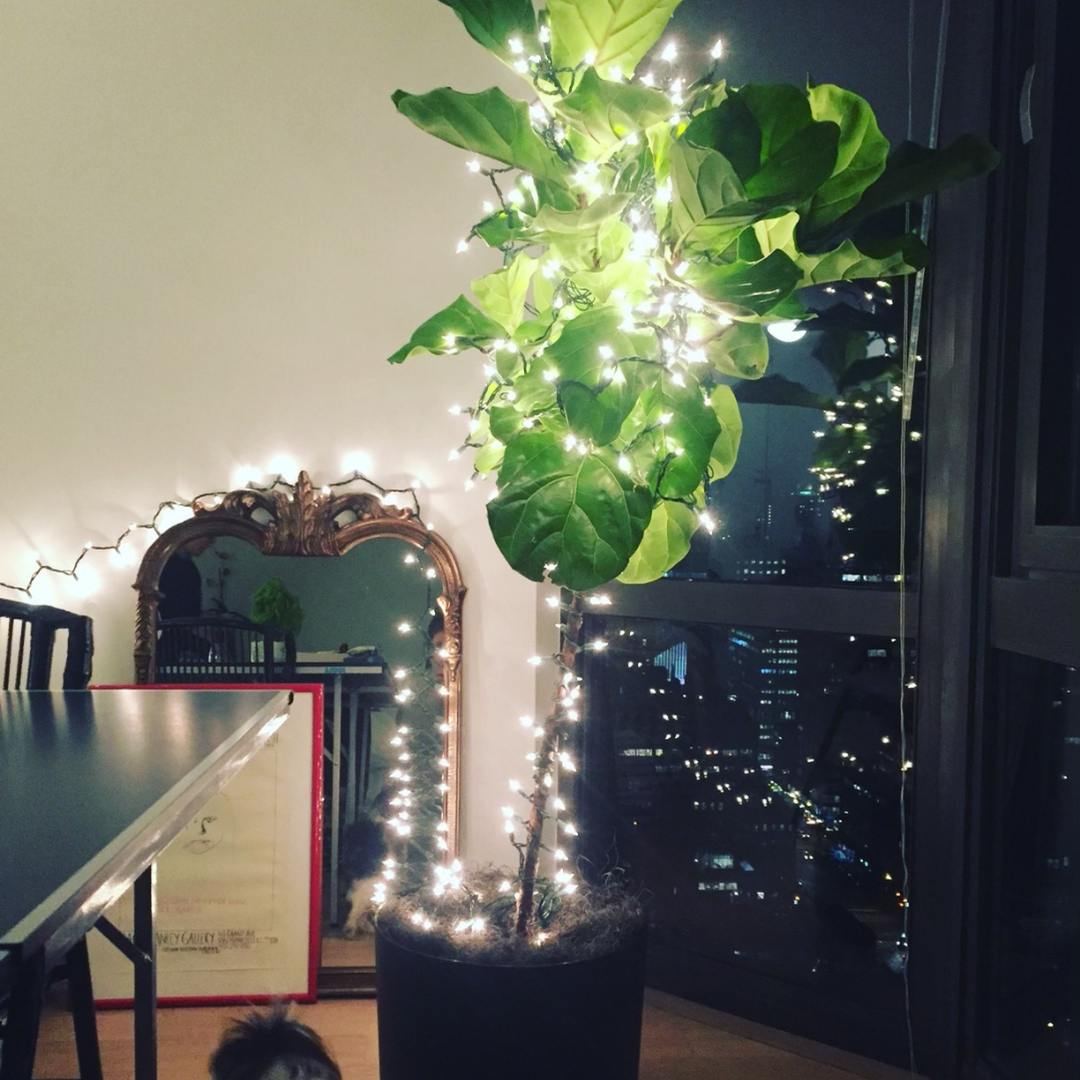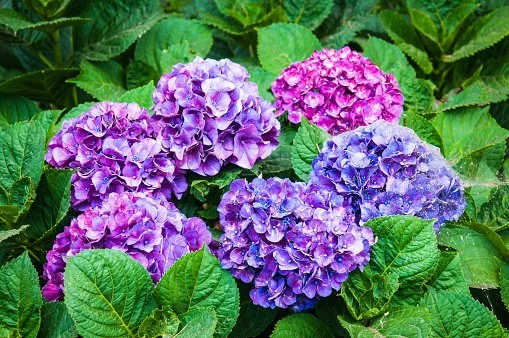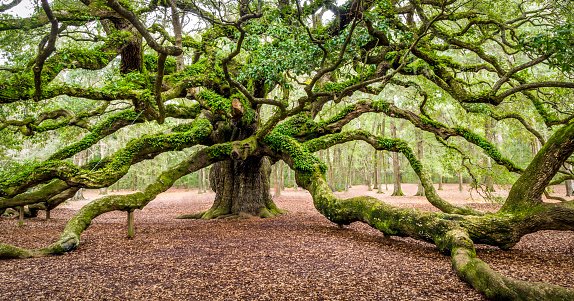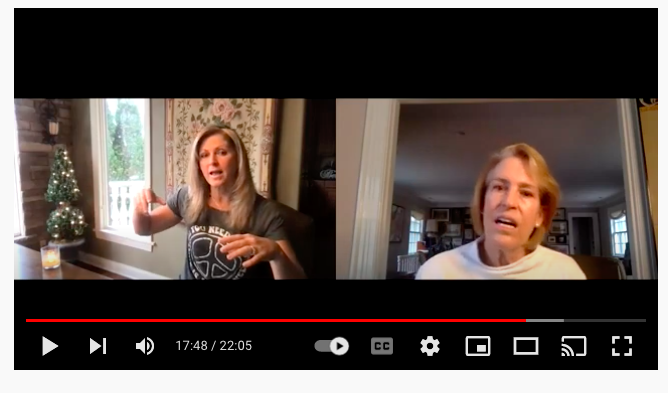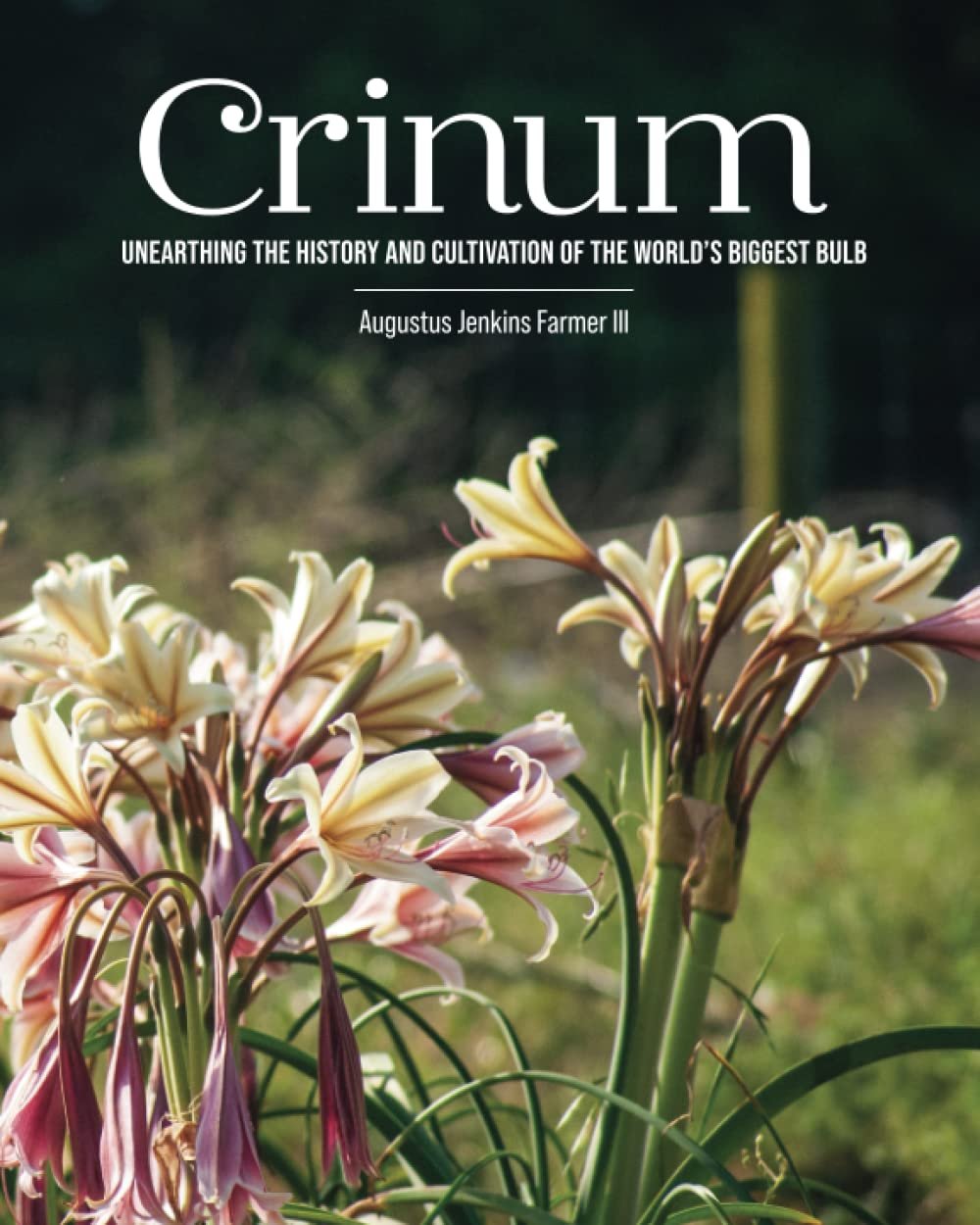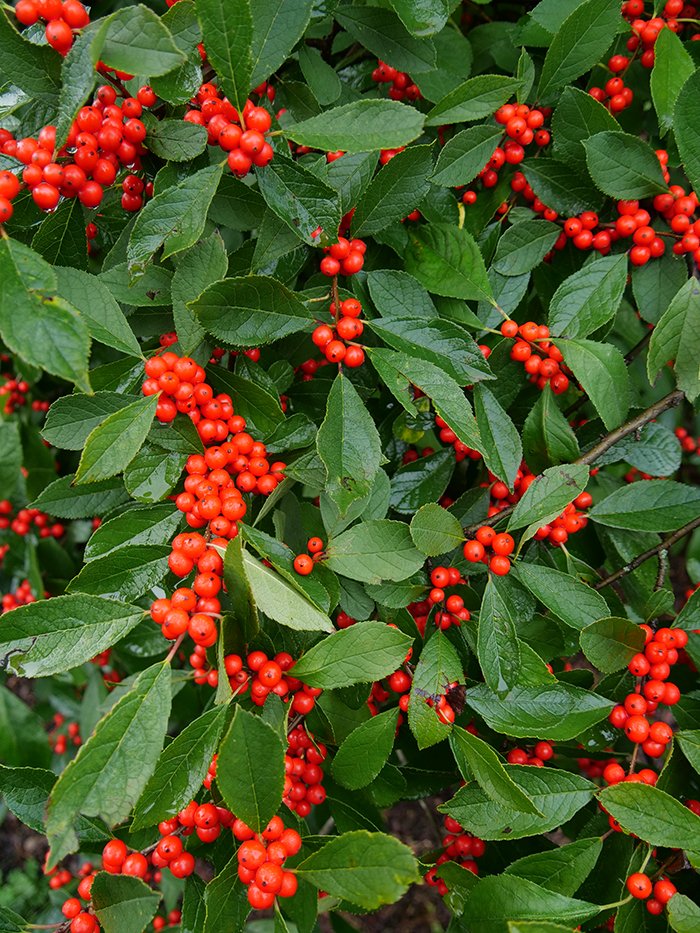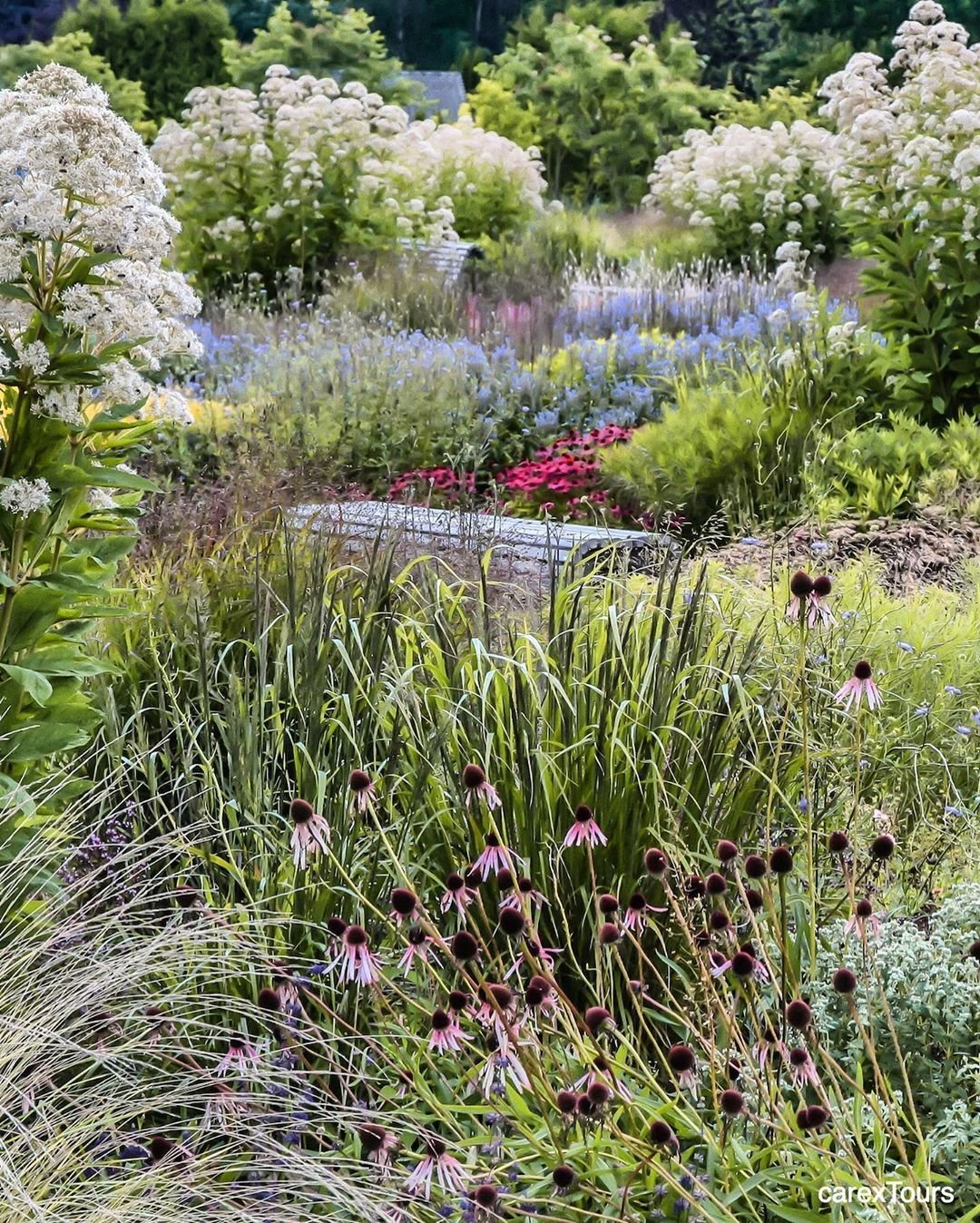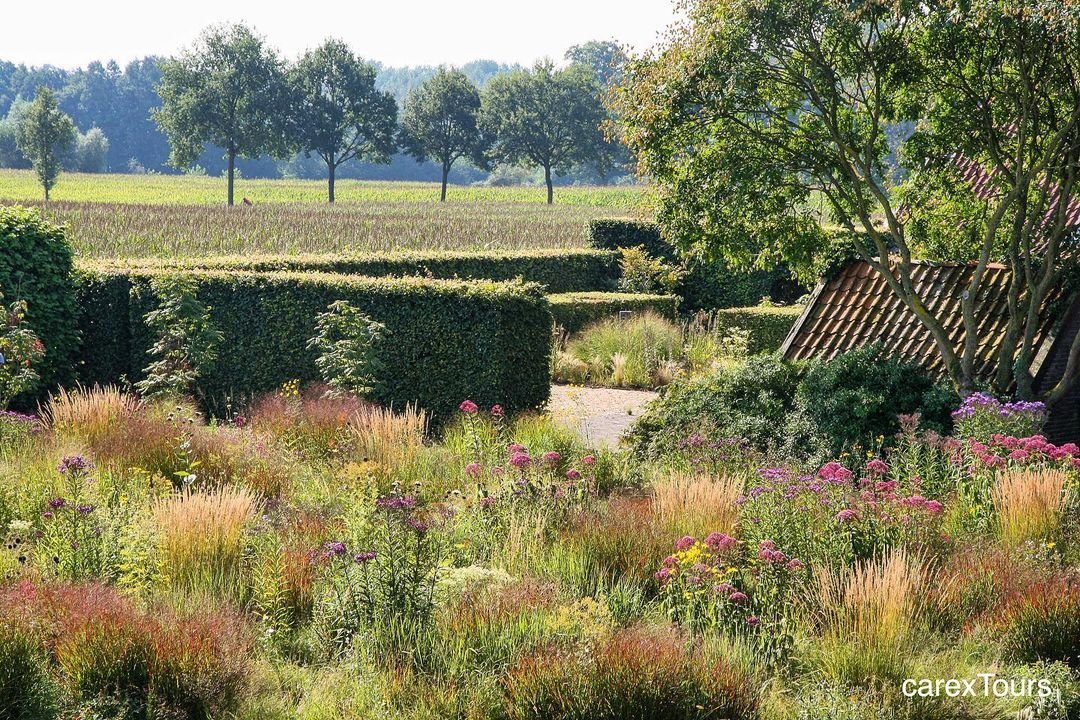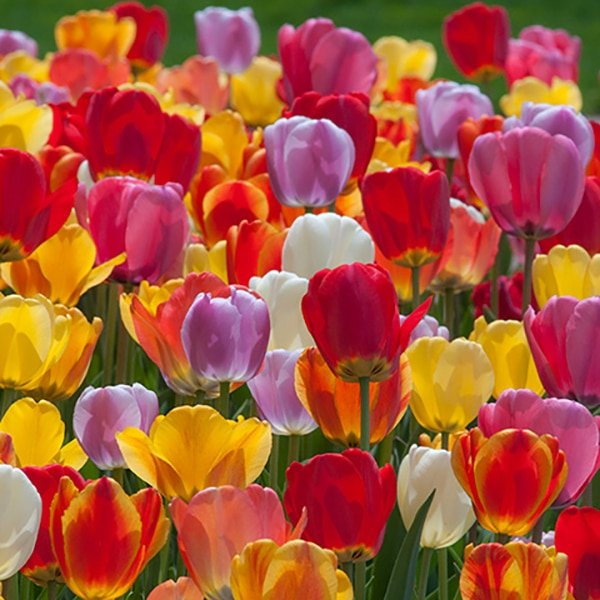51: Serome Hamlin and Enchanted Gardens
50: Golden Alexander, Amanda Ever Hopeful, Pruning Hydrangea Paniculata
How to compost? With enthusiasm. Amanda the Ever Hopeful Gardener leads us through the basics of cold and hot composting, Bokashi composting and composting with worms. Whether you compost leaves and garden debris or more exciting fare such as hair and coffee grounds, you will learn a lot from Amanda!
49: The Ficus, Julie Hart (Nanny Noo) and How to prune Hydrangea macrophylla
Do you stay up nights wondering what to do with your Hellebore foliage? Gee, me too…
As a professional gardener I would always remove it, and I almost always do the same for just little me too.
Cons:
If you don’t like gardening, then it’s just another thing you have to do, but I bet you aren’t reading this if you don’t like gardening.
Anne Wareham of Garden Rant points out with an immensely illustrative photo that they can look a little naked and silly sticking straight out of the ground with no foliage. She wrote a whole blog on the topic of Hellebore foliage.
Pros:
It’s a pretty satisfying job.
You get to add a bunch of green to your compost pile.
When new growth comes, it’s all the good stuff, including fresh new foliage.
But, like with most gardening topics, you get to choose how you feel and act about it!
Plant of the Week
The Ficus is a genus of 850 everythings— trees, vines, epiphytes, sea snails… but let us concentrate on plants. Here are some fun facts:
The Banyan tree is a Ficus!
The Ficus benjamina, which may be in your house as a houseplant, could get to 50’ if left to its tropical ways outside.
The Fiddle Leaf Fig is a Ficus (F. lyrata), and let’s concentrate on my grandplant (a plant belonging to our daughter and SIL, and grandplant should probably not be a thing, and yet it probably is).
Our Grandplant (btw, I don’t think Jeff is tracking that he has one of these) in its childhood in Manhattan.
Just last spring, now at least 5 years of age. And Great Grandmother Murney is 86 and Great granddaughter Murney is 9 months.
Getting a little big for our britches…
So we undergo some surgery
And fits better in the cute little CT home.
And the happy result of those bottom 3 photos is that one of those babies is now living with us in Virginia. So I guess that mean we adopted our great grandplant.
Guest
I don’t know when I stumbled onto Nanny Noo on Instagram, but I have been following her for years. She is one of those people who make you feel better having checked in with her for the day. She is very active on Instagram, but only in the sort of way that gives the vibe of “how are you doing today?" and you are doing better because she reached out. Sometimes I’ll get busy and not ‘see’ her there, and then I will get a gentle tag and hello and all is right again.
Her real name is Julie Hart and her Instagram account is Nanny’s Diary 92. She is a mum and a grandmum and a true gardener. I chat with her about how she began, how she learned, what it means to her now, and at the end of our chat she gives us three valuable gardening tips.
She loves boxwoods, roses, blue and white containers, and ‘pottering’ about. There are so many reasons why social media is not good, but Nanny Noo is a reason that it is heart warming and very very good. Read these posts and then I bet you go follow her.
So this is a typical charmer and you can see some of her pots.
This one is so charming that you should follow this link to her Instagram post. It’s worth a read.
She loves her grands.
The Play List
Before I get down the business of pruning Hydrangeas, I did a sort of medium dive into the topic of the “business” of dogs. We’re talking #2 here, people. I won’t include any images, but so that you are better informed, here is the link to a rather dire information from the EPA that I managed to misquote, oops, and the more hopeful information about how Ginny’s production could be safely composted from the USDA. Warning: this document is very specific, and neither the USDA nor I recommend that you attempt this unless you get your pile really heated up to kill the myriad pathogens that your dog produces. This stuff is very noxious .
On to PRUNING HYDRANGEAS
Go listen to the pod for any pearls of wisdom that you can collect from me, but the three big takeaways are
If the word ‘macrophylla’ is a bit fancy for you, it’s they type that looks like the photos below. I think of it as the one most people fall in love with first. It blooms on last year’s growth, so pruning it is unnecessary and also hazardous if you want blooms this year.
Photo: AZNDC on Unsplash, and see all those flowers on the ground? Those are the branches I would have pruned.
2. You don’t have to prune them at all! I prune lower branches, dead branches and branches that stick out all crazy.
3. Don’t do this (below). I rarely get excited enough to say ‘do’ or ‘don’t’ about your garden, but c’mon man. That’s ugly.
Why would you EVER?? Please take those sticks away (later in the spring, when you know the sticks are sticks and not viable flowering branches. Thanks for that.
If you like this podcast and blog, would you help me
in my quest to not work for free?
I would appreciate it very very much!
48: The Live Oak, Kelly Lehman, Winter Pruning
Plant of the Week
I am lucky enough to be able to stare at a fairly mature Live Oak from my less than aesthetically pleasing Florida rental, and it is making all right in the world again. Live Oaks, the Quercus virginiana, can grow for centuries and take up the space of city blocks. They host innumerable mammals, insects and birds. Majestic is the adjective you are looking for.
Angel Oak near Charleston, probably 400 years old.
Live Oak allee at the Wormsloe Historic Site in Savannah, GA.
MY Live Oak, outside the Plastic Plant rental. Brings me joy every day (the tree).
An accessorized and gravity defying limb of MY Live Oak.
Guest
I bumped into Kelly Lehman on Instagram a few months ago, and besides her enthusiasm and knowledge, part of what drew me in was Lucy the Bernese Mountain Dog (two of my grand dogs are Berners). Kelly and I talked about her social media presence, the growth of gardening brought on by the lockdown, and what a great community the world of gardening is.
We even found we have a common friend in Launceston, Tasmania, Julie Hart (Nanny Noo!) will be my guest next week!
Kelly, a plethora of Hydrangeas and dear sweet Lucy.
Kelly took our zoom chat and made a video out of it, which you can see here. Kelly put the work into making this, and it’s really helpful to see some of the visuals she put into the topics we discuss.
She may be onto something here, this YouTube thing. You should check out her channel— lots of fabulous information there!
Her many social platforms are linked below, and of special interest are
her flower courses she is offering through a platform called Retrieve.
Also have a look at…
Kelly’s Facebook Flower Tribe group
Whew! All those links practically wrote the whole blog!
Kelly and I talked about Hydrangea Pruning, and then I went on to a few more details on that subject during…
(OH! And the dwarf Hydrangea arborescens that I could not think of in the moment is the H. arborescens ‘Wee White’.)
The Play List
Rule #1 about Hydrangea pruning is that it never has to happen. But I love to check in with mine each winter and see how they are doing. A little shape up is often needed. In this episode, I introduce the basics of winter pruning of any flowering shrub and they are…
Sharp pruners are the way to go, and you know I love my Okatsunes.
Assess your flowering shrub— do you like the shape? Do you like the size?
Remove broken or dead branches. I like to get rid of any branches growing along the ground or crowding the middle. Yes, there are flowers on the branches I am removing, but I would never miss them because of where they are growing, and I like a little control!
More next week on specifically pruning Hydrangea macrophylla. Here’s a preview!
And, lastly, the promised link to the Gardernerd Tip of the Week podcast with Jeff Pierce— they one where he talks about the fact that the plant/soil continuum extends to the biodomes found inside of each one of us too!
47: The Crinum, Jenks Farmer, and Oasis
We are all about Crinums on this episode! They are the Plant of the Week, they are the subject of the interview, and I even send you off to hear more about them in The Play List!
Plant of the Week
So this was a plant that I knew vaguely about but had put in the same category as Bromeliads— cool, but I’m not growing that. If I were not such a lazy gardener, of course I could grow most anything. Lazy gardeners are a dime a dozen and yet I am proud to be part of that esteemed group. Crinums are almost as common, with 180 different types, and it turns out that I CAN and I WILL grow them in my zone 7A (probably rapidly changing to 7A- or 7B+) garden! As I sit down here in sunny Florida concocting this post, I am basking in the glory that they surround me.
We are living in a large golf complex for the month of January, and it’s clear that one landscaper is in charge of the plant choices, and he or she is a fan of C. augustum ‘Queen Emma’ because the place is lousy with them. I am loving it! Look at those strappy leaves and the beautiful lily flower.
The Crinum can be, depending on the type, the largest bulb in the world, and many of them are tropical, but it turns out that some can grow in colder climes and also that they are darned easy to make work in a container if you live way up north, just like a Canna or Elephant Ears. Let’s learn more.
Guest
Augustus Jenkins Farmer III is a charming southern gentleman, and I was happy to soak in his knowledge of the Crinum. I feel like he is the BEST source to learn about this amazing bulb because his passion for it has produced a farm, a mail order business, and more recently, a book: Crinum: Unearthing the History and Culture of the World’s Biggest Bulb. (Disclosure: includes affiliate links)
Ben Folds: a wise alternative rocker.
Jenks talks about his love of them (but he loves so many plants!) and how they grow on the podcast. He goes into lots of different types, how to plant and divide. their history, their culture, and their culture that is not horticulture. Reputations of plants come and go just like clothing styles, but Jenks would like to help Crinums to get away from their redneck past. As Ben Folds said, you can cover it up, and I think Jenks is a good one to get behind the cause of the Crinum. Because they are so indestructible and long lived, they tend to exist in places no longer, and perhaps never, frequented by the high brow crowd. But they are beautiful flowers! It’s like the lowly marigold, or the forsythia: doomed to be maligned because they are too easy and too common. I mean, in the South.
Crinums are a passion for Jenks, and he shares that not only in his new book, but also on YouTube and on his web site. I am definitely going to add these to my garden, and I feel confident that I will give my new little (that’s relative) bulbs a good home because of all the information he has made available on how to grow these plants.
These images are from Jenks’s website. Great horticultural intel to get us all started.
I’m shopping on Jenks’s website as I procrastinate about finishing this blog post. Thinking I may go for the “Cold Hardy Collection” but still not sure.
In the podcast I referred to Jenks’s recent post on Garden Rant, in which he talks about his reputation. It’s not a bad reputation, it’s just that there is much more to Jenks than being The Crinum Guy. Sort of like there is much more to the reputation of the Crinum than being a pass along plant commonly found in old cemeteries and by deserted houses. They are beautiful flowers, interesting foliage, and awe-inspiring bulbs too, and I can’t wait to try them!
The Play List— to do
Thank you, dear sweet Loblolly, for landing next to and not on my ancestor’s urn.
When heavy snow comes down fast, you really don’t have to pamper your plants as much as I read on the internet. Of course you don’t want to do more damage that the snow would, but sometimes there is not a moment to lose! Get out the shovel or broom and free those branches up, taking care of yourself (mind the trees around you!) at the same time.
Resist the temptation to garden when your soil is saturated. Soil compaction can happen when you and your boots mush down the crevices that are essential to letting the water makes its way around that soil. Ironic that treading on wet soil can make it so soil can’t get wet the way it should, but it’s true!
Order seeds if you haven’t! So many new gardeners— you don’t want to share with all the neophytes, now do you? :)
And lastly, how about a public service message? We got a really beautiful flower arrangement from our son and daughter-in-law to help welcome us to our little rental which is appointed with the largest BarcaLounger I have ever seen and a strange assortment of ‘art’ and ironwork that wasn’t attractive when it was picked out from from Home Goods in 1994 and certainly isn’t attractive now. .
SO gorgeous, and HUGE! Probably 2’ tall.
I immediately wanted to dismantle it, meaning the arrangement, as the BarcaLounger looked daunting, because I wanted spread the goodness in several little arrangements. I am no flower arranger, but I don’t understand why that horrible Oasis had to be a part of it. Such a narrow vase, and so many flowers— but it came with a huge hunk of that horrible plastic.
All single use plastics are bad, but Oasis floral foam is worse than bad. It degrades down to tiny nano-plastics, and then doesn’t degrade farther for a long long time. So it ends up in our Oceans, then our fish, then, eventually, in us. Gross.
This is oasis. And a look of dismay.
So I made a video on Instagram that talked about it a little and here is my simple plea: when ordering flowers, simply ask for no plastics, please. That should work, right? And don’t forget to say “no utensils, please” with your take out food. Hate it when I forget to!
Listen
If you want more of Jenks, he was a guest on the wonderful A Way to Garden Podcast just last week. Margaret Roach asked him all kinds of good questions, and the link is here.
And NOW FOR THE GIVEAWAY! All you have to do to enter to get Jenks’s book in the mail is to give me your first born child. No? Okay, then how about this instead. All you have to do, and you have a choice of A,B, or C, is write to me at LHarris@LHGardens.com and tell me…
A. What is a new flowering plant for you that you either have gotten or want to get for you 2022 garden?
or
B. What is the weirdest or funniest thing that happened to you in your 2021 garden?
or
C. What plant or plants would you like to prune this winter but you need to know how?
All you need to do is send me your answer to ONE of these. But if you feel like sharing more, then more than one is fine. Jenks is not just The Crinum Guy, by the way. He is also a good writer and very funny.
44: Amaryllis, Ellen Zachos The Backyard Forager, Bulbs in Pots
Plant of the Week
The Amaryllis! Which is the Hippeastrum! The taxonomy of which you don’t really have to know or care about!
But I like learning a bit as I go, and although I had known there was some minor kerfuffle about what the ‘proper’ name for this beauty is, it was fun to actually get to the bottom of it. Read on, fellow nerds… but remember, this is me, and we won’t go deep into science. The shopping part is coming soon.
In brief, the Amaryllis is a monotypic plant hailing from South Africa.
Unsplash by lynnebeclu
Monotypic means there is only one species in the genus. That is quite unusual (think Aardvarks and Gingko trees). The Amaryllis is not what you get when you shop for the bulbs that get you those beautiful flowers. Botanically, you are enjoying a Hippeastrum, which is a genus with 90 species, and they are native to the Caribbean and Central and South America.
Do you really care? The fact may serve you in some trivial situation (trivial, and about trivia, get it?) but I think we should get back to pretty flowers.
Here is a link to my Amazon storefront, and I have picked out some gorgeous ones for you! They won’t cheer you at Christmas, but hey! January and February could use a splash of color!
Janet Mavec Blog
It was fun to be featured in Janet’s blog this month. She has the most gorgeous jewelry inspired by nature, so Ginny and I posed with her Cicada Wing earrings.
I mean, they would have looked great on Ginny but probably would have gotten caught in her tendrils…
Here is her shop— you can get lovely gold jewelry at the same time you will be sporting leaves, acorns, oysters, seed pods, and of course flowers.
Below are some stunning examples of her work.
AND there are cocktails!
This one is called Roses and Rye
Guest
Ellen Zachos’s defining moment came because of a very boring sandwich. She had her eyes opened to the world of unexpected tastes taken from the wild by a colleague who grabbed a ‘weed’ and immediately improved her American cheese, mayo and white bread by sticking it into the mix.
Since then, the gardener/forager/podcaster/writer/teacher has helped spread the word to so many others, and her answer to my question of why you would even think to do this foraging thing was the best answer possible: to experience tastes that you never would know about otherwise.
It’s not easy, this foraging thing. Knowledge is the most important piece (never, no don’t ever, eat something from the wild unless you are certain it’s okay) and you can learn from Ellen by signing up for one of her courses.
Doesn’t she look like fun?
What the hell will she find in there?
Look at the lovely little starter course (for a lovely little price) that could let you know whether this is for you. And I could see how one could get hooked: it would be so satisfying to commune with nature, poking around your yard to see what is good, understanding more about the plants around you, and eventually aspiring to have a garden like Ellen’s— she has an ornamental garden containing only plants that can spice up her palette. She calls them ‘unbuyable flavors’.
Ellen is a garden writer and presenter, and she and C.L. Fornari have a charming weekly podcast called Plantrama. Their tag line: Science, Art, Dinner.. it’s all in your backyard.
Loved talking to Ellen because her enthusiasm was infectious, her knowledge was vast (quite QUITE important in this field) and, as she says on her web site, '“plants can feed body and soul”.
Garden List of Things
~ How about you put off putting away those hoses and keep watering until we get through this drought around here?
~ How about if you live up north and your haven’t yet, you drain your hoses and cut off your outdoor taps?
~ How about you finish planting those bulbs (talking to myself here) but realize that some of them could go in pots?
So many ways to do that well, and here are some links to some articles that give some good info.
Here’s one from Longfield Gardens
And here’s one from White Flower Farms, the home of the sold out, can’t wait for next year Hot Pants Tulip. Their article is called “it’s easier than you think, and it really is!
must remember to order HotPants early next year!
Lots of ways to do it right, but here are some things to avoid (from personal experience)
Tell Siri to tell you to make sure your pots are not dusty dry if you have them stowed in the garage or shed or some forgettable place. Check them every 3 weeks or so. They don’t want to be wet! Just not dusty dry.
If you have planted them in containers currently outside and planted with pansies or decorated with seasonal greens, maybe you think about whether squirrels will get into them and protect accordingly
Don’t do what I did and not protect tulips planted in pots then sunk in the ground. Read below, and weep a little.
Listen
Handel’s Messiah and you can learn the parts here!
And here’s a local, but not really because it’s virtual (and free) chance to learn about controlling invasive alien plants in winter. Join Blue Ridge PRISM for their 2022 Winter Meeting on January 5th, 11:30 am – 1:00 pm. There will be an update of recent PRISM activities by Rod Walker, Blue Ridge PRISM President followed by your questions to our expert panel on how to control invasive plants during the winter.
Next week, the adorable creature below, the one on the right, will join me as we talk about dogs in the garden. That’s my other sister, Kim.
She does not teach puppies to bite. Quick toy/epidermis swap right after this photo was taken.
42: Winterberry and Carolyn Mullet of CarexTours
This week lucky listeners got a baritone version of my voice because of a head cold, and while I am griping, I may as well mention, again, that we need rain! Generally the ‘put away your hoses’ thing does not coincide with the ‘water your plants’ thing, but don’t forget that plants that are new and precious, particularly evergreens that are new and precious, will need to start the winter with some reserve moisture in the soil.
Plant of the Week
Way back in Episode #2 I mentioned this one: the Ilex verticillata, or Winterberry. You may say, c’mon, have you already run out of Plants of the Week? No, but I honestly don’t remember what inspired me to feature it back at the end of February. Maybe I saw some with the berries hanging on, but chances are pretty good that it had fed the birds by that time of year. Right now, however, you will see the green foliage right next to those red berries, making the scene very ho-ho-ho-ish.
Image from Proven Winners. Because this plant is a winner.
This plant is native to the Eastern US and Canada, feeds all kinds of coveted songbirds, will tolerate wet soil, AND can help you out with Christmas decorations.
One thing you need to know—it’s one of those dioecious plants, which means that the male bits are in one entity, while the female bits are found in another. That is how most humans can also be described, but it’s fairly unusual in plants (most plants are hermaphroditic with all the junk needed found in a singular plant).
So if you want the berries, you have to get yourself a non-berrying male Winterberry too. You can plant his homely self off behind a bush somewhere so you don’t have to look at him.
Guest
Carolyn Mullet started CarexTours for a very good reason: she was a professional garden designer who never had time to go look at beautiful gardens. Having fine-tuned the logistics of getting Americans into the loveliest public and private gardens in Europe (7-9 day trips, 10-15 gardens, great meals and accommodation), Carolyn had to take a pause during the pandemic, but is now planning for some enticing excursions in 2022.
More information will be available on her website in the coming weeks, but it’s not too soon to start dreaming and hinting about a very special Christmas present, is it?
Carolyn has tons of followers on Facebook and Instagram, where she posts amazing photos of her trips. She and I discussed the natural perennial movement, citing Piet Oudolf as the father of the trend—a trend that has lasted decades and shows no signs of wavering.
The Play List
Henry from Alexandria wanted to know about putting roses to bed, and the tea on that (get it? tea? tea rose? ummm, there’s something called a Hybrid Tea Rose but that pun makes me think I am getting punchy and should probably wrap this up…) is that there is no call to action at this time. Roses LOVE a good scalping in winter and early spring because they produce more flowers on new canes, and you will inspire new canes with the scalping!
Another proponent of this movement is American garden designer Kelly Norris, whose book New Naturalism is highlighted in Episode 6 of Into the Garden with Leslie.
As you can see from these photos borrowed from Carolyn’s Instagram—all Oudolf designs—the basics include texture, movement, ornamental grasses, and even seed heads.
I would always ‘hill up’ my roses with leaves and/or mulch in winter when I lived in Connecticut, but not here in Virginia. Mine haven’t gone dormant yet!
Other calls to action in the garden this week? If you don’t have a nasty head cold, you can go outside and plant your bulbs.
Listen
And if you do have a nasty head cold, just sit tight and wait for Episode 43, which will be all about bulbs, again, as I quiz the owner of my fave bulb source, ColorBlends. Tim Schipper and I talk all about bulbs, including, thank goodness, that it’s not too late to plant them!
Big Ups, one of the Blends that Tim and I will chat about.



